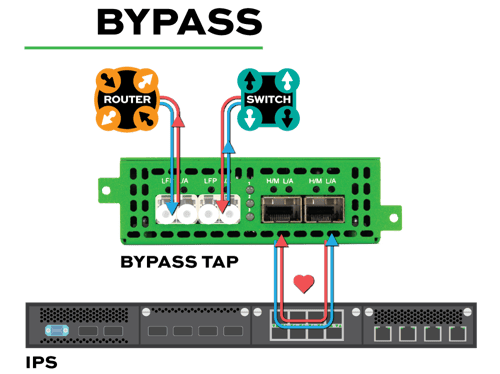Network Visibility Products
Garland Technology ensures complete packet visibility by delivering a full platform of network TAP (test access point), inline bypass and packet broker products.
Visibility Solutions
Garland Technology is committed to educating the benefits of having a strong foundation of network visibility and access. By providing this insight we protect the security of data across your network and beyond.
Resources
Garland Technology's resource library offers free use of white papers, eBooks, use cases, infographics, data sheets, video demos and more.
Blog
The TAP into Technology blog provides the latest news and insights on network access and visibility, including: network security, network monitoring and appliance connectivity and guest blogs from Industry experts and technology partners
Partners
Our extensive technology partnership ecosystem solves critical problems when it comes to network security, monitoring, application analysis, forensics and packet inspection.
Company
Garland Technology is dedicated to high standards in quality and reliability, while delivering the greatest economical solutions for enterprise, service providers, and government agencies worldwide.
Contact
Whether you are ready to make a network TAP your foundation of visibility or just have questions, please contact us. Ask us about the Garland Difference!
Importance of Inline Security for IT Network Protection

Network security is a top priority for administrators and IT decision-makers, as cyber threats evolve and become more sophisticated. Without proper protection, networks are vulnerable to attacks that can result in data breaches, downtime, and significant financial losses. This is where inline security solutions come in, providing an essential component of a comprehensive security strategy.
Understanding inline security as an essential network protector
Inline security is a type of security architecture that involves the use of security tools and devices to inspect and filter network traffic in real-time. Unlike out-of-band security measures like NDR and IDS, inline security devices operate directly in the path of network traffic.
This allows inline security solutions to provide immediate protection against cyber threats, including viruses, malware, and unauthorized access attempts. By deploying inline security tools such as IPS, DLP systems, and NGFW, organizations can reduce their exposure to cyber threats and enhance their overall security posture.
Inline security solutions can be implemented at various points in the network. By implementing inline security measures at strategic locations, organizations can minimize their attack surface and ensure that all network traffic is inspected and filtered for potential threats.
Considering the need for inline security for network protection
Inline security is an essential component of a comprehensive security strategy. Network attacks can come from various sources, including email, web browsing, and file downloads, and can range from minor nuisances to significant breaches that can compromise sensitive data and damage an organization's reputation.
Inline security solutions allow administrators to monitor and control network traffic in real-time, helping to prevent cyber threats before they reach their target. By placing security devices directly in the network path, administrators can ensure that all traffic is inspected for malicious activity.
Implementing inline security solutions with Bypass TAPs
Implementing inline security solutions with network Bypass TAPs is an industry best practice leveraged by cybersecurity professionals. The Bypass TAP is designed to be external to the inline security tool and was designed to resolve the problem of an inline security tool creating a point of failure in the network. Bypass TAPs prevent inline devices from being a single point of failure and causing network downtime. Network downtime can be costly for organizations and mean miserable, around-the-clock hours for IT professionals.

In the event the device fails or if there is a power loss, the heartbeat packets that are sent from the Bypass TAP to the inline device trigger the TAP to “bypass” that inline device. This leaves the network link up or triggering a failover to a redundant device. The heartbeats added to the redirected traffic have additional functionality: they allow the Bypass TAP to be aware of the health of an inline appliance.
Additionally, Bypass TAPs give network engineers a means to simplify tool management such as maintenance, installing patches, and making needed updates easier. Bypass TAPs allow for troubleshooting issues with the inline tool and validating the fix before putting the tool back inline. Investing in a Bypass TAP is the perfect way to add or pilot new inline devices in the future, without needing to take the network down.
Best practices for implementing inline security solutions
Implementing inline security solutions with external Bypass TAPs requires careful planning and execution to ensure maximum effectiveness. Here are some best practices for implementing inline security solutions:
- Identify your critical assets and data flows: The first step in implementing inline security is to identify your critical assets and data flows. This will help you determine where to implement inline security and what level of protection is needed.
- Conduct a risk assessment: Conducting a risk assessment can help you identify potential vulnerabilities and threats. This will help you design an inline security solution that addresses your specific security needs.
- Choose the right inline security solution: There are many inline security solutions available, so it's important to choose the right one for your needs. Consider factors such as throughput, latency, and ease of use when selecting an inline security solution.
- Test and validate your inline security solution: Before deploying your inline security solution, it's important to thoroughly test and validate it. This will ensure that it works as intended and doesn't negatively impact network performance.
- Monitor and maintain your inline security solution: Inline security solutions require ongoing monitoring and maintenance to ensure they continue to provide effective protection. Regularly review logs and alerts to identify potential threats and address any issues that arise.
By following these best practices, you can implement inline security solutions that provide effective protection for your network and critical assets.
Conclusion
In conclusion, inline security solutions are a crucial part of a comprehensive network security strategy. By implementing external Bypass TAPs alongside inline security solutions, organizations can ensure that their network is protected and the tools delivering the protection are not creating any failure points in the network.
Looking to utilize Bypass TAPs with your inline tools but need help figuring out where to start? Join us for a brief network design-IT consultation and demo. No obligation - it's what we love to do!
Written by Neil Wilkins
Neil is a Systems Engineer at Garland Technology focusing on customer challenges with network visibility such as resilience, interoperability, and integration into data center topology. Wilkins is a seasoned network professional with 30 years of experience globally within the computing industry, in product marketing and technical support, for both the commercial and public sectors
Authors
Topics
- IT Security (200)
- Network TAPs (139)
- Network Monitoring (134)
- Hacks and Breaches (87)
- Network Management (81)
- Network Design (73)
- Industrial OT (71)
- Technology Partners (63)
- Network Infrastructure (59)
- Inline Security (49)
- TAPs vs SPAN (47)
- Network Packet Brokers (41)
- Data Center (37)
- Cloud Solutions (33)
- Software Defined Networking (SDN) (24)
- Events & News (20)
- The 101 Series (19)
- Federal (17)
- Cisco Solutions (16)
- Wireshark (14)
- DesignIT (13)
- Healthcare (11)
- MSP/MSSP (9)
- Palo Alto Networks (8)
- Finance (7)
- Troubleshooting (5)
